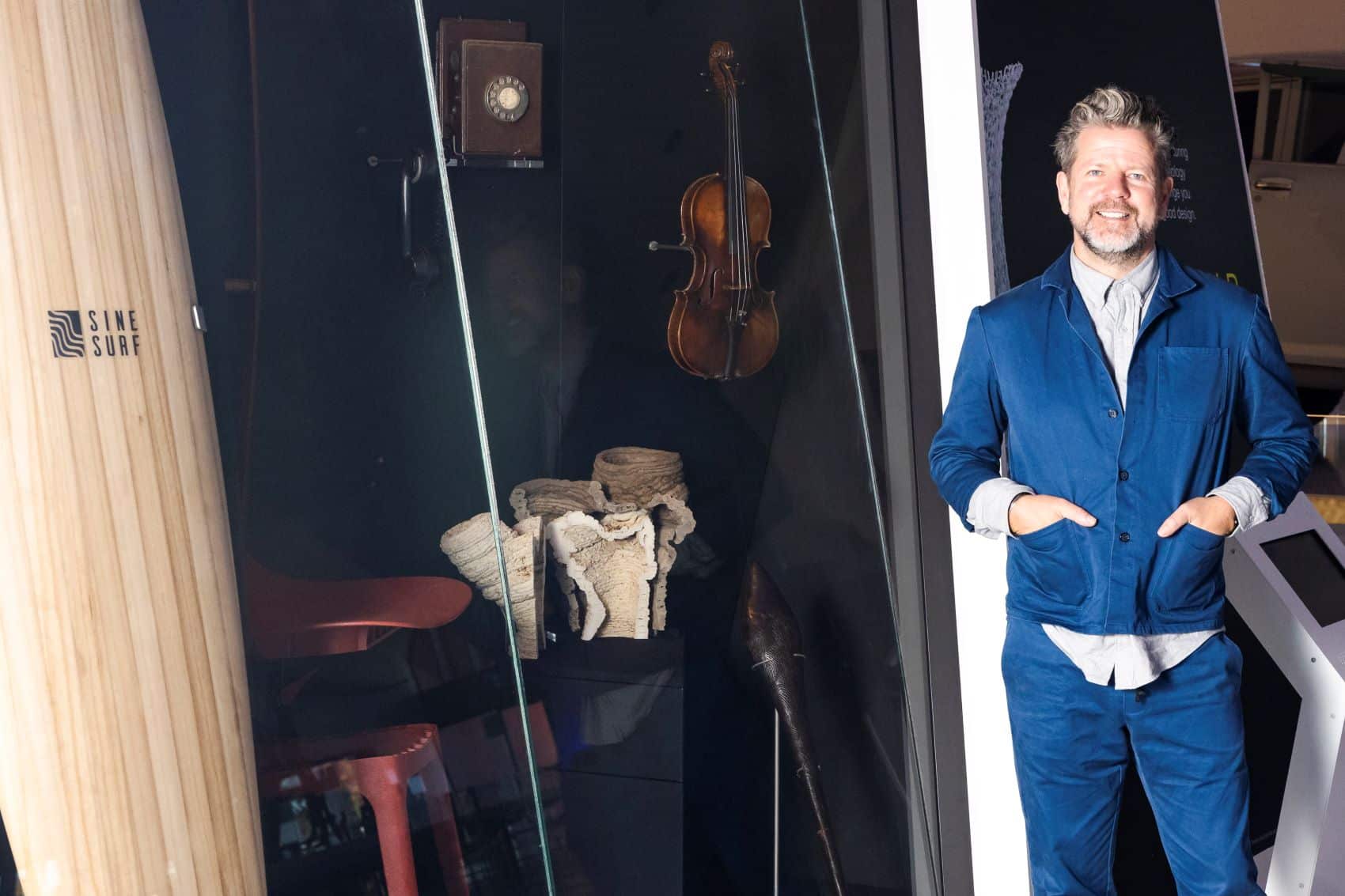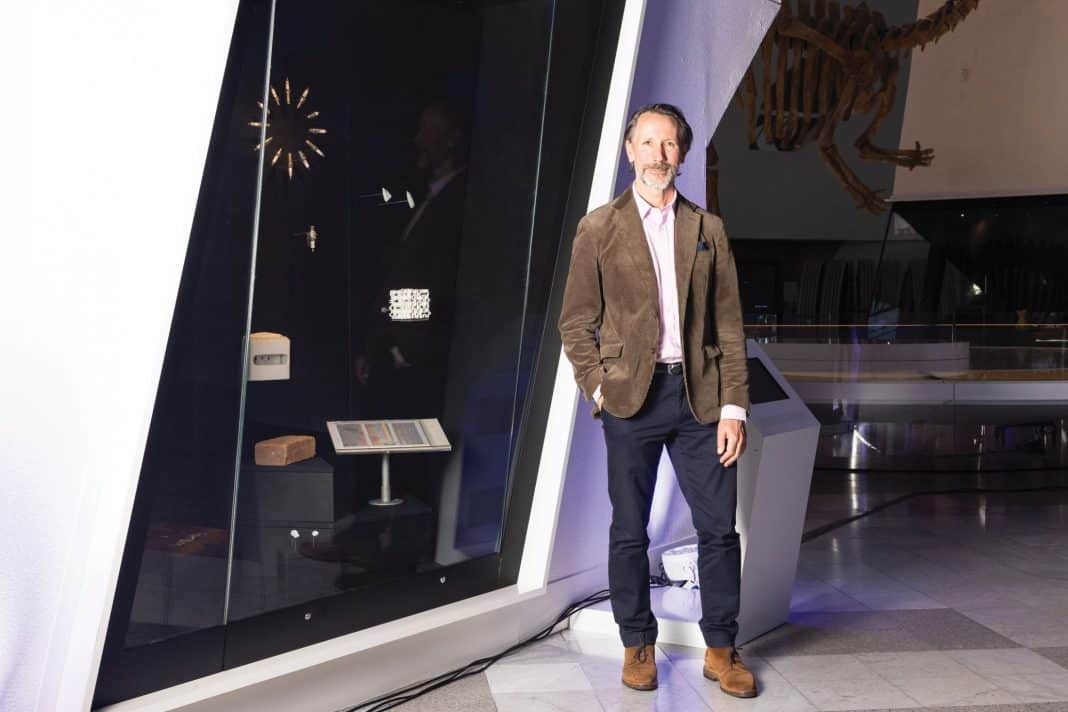If a picture paints a thousand words, then what secret tales do objects have to share with us? The actual object may reveal something about the owner and its design can offer an insight into what was happening in the world at the time. Telling a tale of the importance of good design, the National Museum of Australia (NMA) displays Material World until 15 April 2024.
A partnership between the NMA and the Alastair Swayn Foundation, the exhibition has been the brainchild of Adjunct Professor Lyndon Anderson, Swayn Senior Fellow in Australian Design. Professor Anderson describes Material World as the nexus between materials, technology and design.
“It’s charting the design process through the evolution of materials and it’s divided into five different materials. There’s five separate spaces, each one stands as an exhibition in its own right,” says Anderson.
The 65 objects are divided into glass cases in the Museum’s atrium covering times from First Nations people and early colonial settlers through to evolving technologies. Through wood, metal, glass, leather and ceramics, each piece tells its own design story.
Anderson says that if a material doesn’t quite have the properties we desire, we can redesign it; perfect examples include the bicycle tyre, and medical equipment being reimagined from a metal that was designed for outer space exploration.
“A really interesting one is made out of shape memory metal called nitinol and that was developed for an alternative to a rubber tyre on landing vehicles for Mars because imagine going to Mars and getting a puncture,” Anderson says. “Now that technology has come all the way back down to earth and is used in new variations of heart stents.”
The story the revolutionary metal tells is not how the new made the old redundant, but how each new generation of designers has more choices to work with. Anderson says not all design evolution comes from architects and designers, but also from artists and innovators.
Alongside intricate handblown glass designs are the Kimberley Spearheads, created by First Nations people in Western Australia. Anderson says they were created from discarded first settler glass bottles and became useful for hunting and trading.
“A Kimberley point is a really terrific example of one of our first opportunities to see upcycling where something is created from something else and the new object is of more value than the one it was created from,” he says.
Feeling like a child in a candy shop, Anderson had access to the NMA’s collection of 200,000 objects, which he says weren’t necessarily collected for their design but for the stories behind them. Around half the objects in the exhibition came from the Museum collection, chosen for their design story that had yet to be told. The others are items that you could order or buy that tell an interesting story, such as the leather iPhone case which sits with a bible from the 18th century.
“In the 18th century, the precious commodity of religion was put into a book and to protect I,t preserve it, it was bound in a leather case … Then today, we’ve got iPhone case in there, because that’s exactly what iPhone is doing; it’s saying this is a precious little computer you can put in your pocket, so precious we need to put it into a leather-clad case.”
Working predominately with metals and plastics, Anderson designed commercial furniture before researching design practices and entering the academic field.
“I’ve spent 40 years of my life in the design industry either designing, teaching it, researching it or learning about it. So, for me, this role here is just a wonderful way of combining all of those elements and being as much as anything else, an ambassador for good design,” he says.
Growing up in Canterbury, known as cathedral town and home to the oldest cathedral in England, Anderson was surrounded by medieval buildings in a town fenced by a Roman wall. He says this sparked his lifelong interest in archaeology and history. Material World marries that passion with the contemporary design he has focused on throughout his career.
“It was really interesting to explore a collection with objects that are up to 300 years old and compare that to cutting-edge emergent technologies and their use in contemporary practice today,” he says.
Throughout his three-year fellowship, Anderson aims to leave a legacy and project that can be extended and developed further. His first year was dedicated to curating and launching Material World; the curator plans to extend it with audio and physical tours explaining the place of each object.
“How do you tell the story of the use of a single material in the design process, when you’ve only got room for maybe eight to 10 objects?”

Design enthusiast Tim Ross says because objects are so accessible, they play an important role in telling stories of people and collective communities. Ross recalls writing a piece about his mother’s casserole dish which resonated with people, who sent in photos of their own dishes and shared their memories of home and family.
In Material World, Ross says it captures the storytelling of an object while also sparking an interest in what they are and why they were made. By breaking it up into different materials, he says the small but powerful exhibition invites us to explore them further.
“It makes us look at the story of these objects and see where they sit in our history or they don’t fit in our history. That’s my interest in them, is that if we elevate the everyday and the ordinary, sometimes it takes us to a place that we never thought we’d go. So, I find myself really surprised like ‘I don’t know anything about glass eyes, there’s glass eyes here’ and that just kickstarts a million questions in my mind.”
Explore the world through different objects in Material World at the National Museum of Australia until 15 April 2024; nma.gov.au
Get the latest Canberra news, sport, entertainment, lifestyle, competitions and more delivered straight to your inbox with the Canberra Daily Newsletter. Sign up here.



